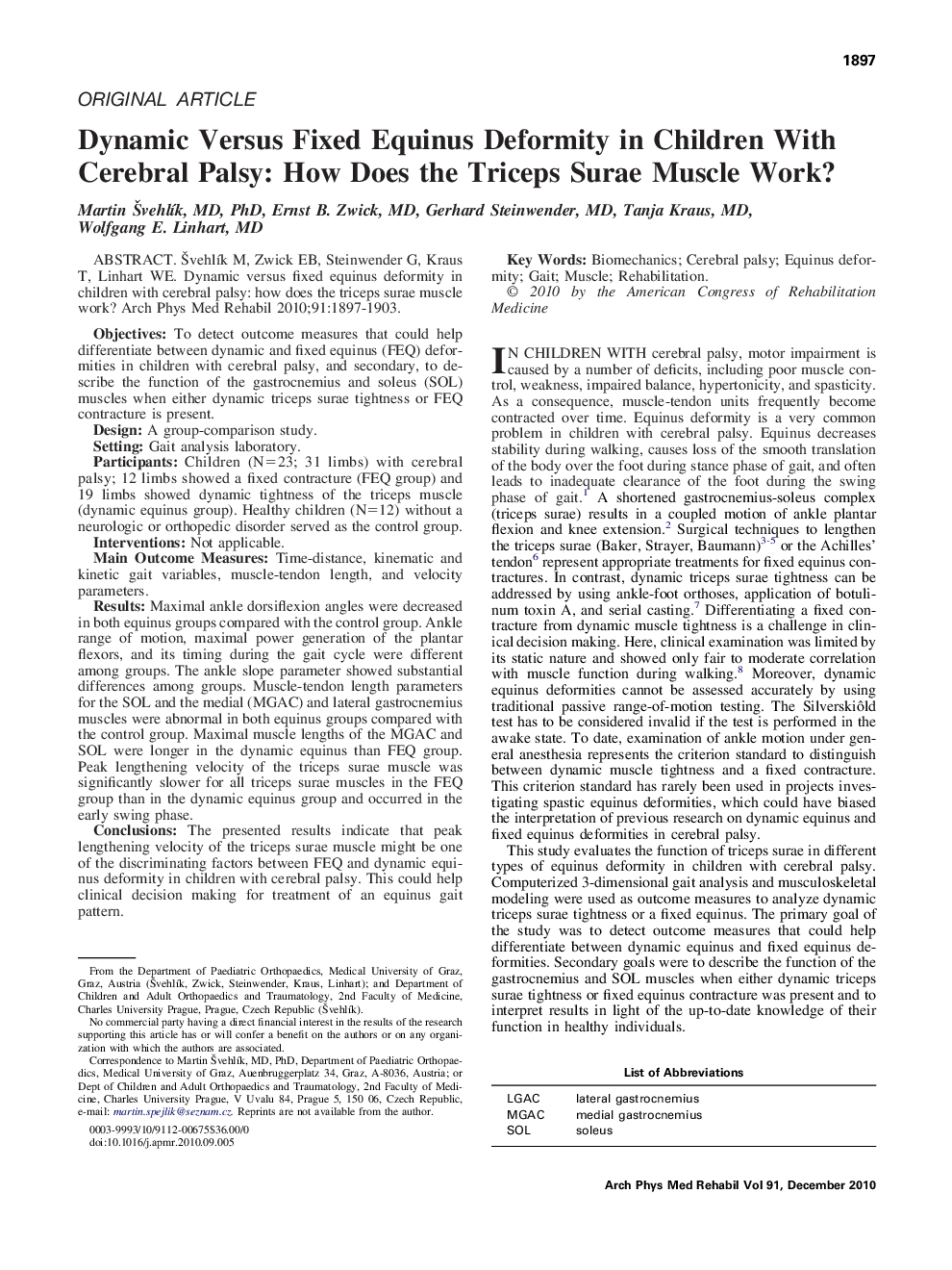| کد مقاله | کد نشریه | سال انتشار | مقاله انگلیسی | نسخه تمام متن |
|---|---|---|---|---|
| 3450406 | 1595745 | 2010 | 7 صفحه PDF | دانلود رایگان |

Švehlík M, Zwick EB, Steinwender G, Kraus T, Linhart WE. Dynamic versus fixed equinus deformity in children with cerebral palsy: how does the triceps surae muscle work?Objectives:To detect outcome measures that could help differentiate between dynamic and fixed equinus (FEQ) deformities in children with cerebral palsy, and secondary, to describe the function of the gastrocnemius and soleus (SOL) muscles when either dynamic triceps surae tightness or FEQ contracture is present.Design:A group-comparison study.Setting:Gait analysis laboratory.Participants:Children (N=23; 31 limbs) with cerebral palsy; 12 limbs showed a fixed contracture (FEQ group) and 19 limbs showed dynamic tightness of the triceps muscle (dynamic equinus group). Healthy children (N=12) without a neurologic or orthopedic disorder served as the control group.Interventions:Not applicable.Main Outcome Measures:Time-distance, kinematic and kinetic gait variables, muscle-tendon length, and velocity parameters.Results:Maximal ankle dorsiflexion angles were decreased in both equinus groups compared with the control group. Ankle range of motion, maximal power generation of the plantar flexors, and its timing during the gait cycle were different among groups. The ankle slope parameter showed substantial differences among groups. Muscle-tendon length parameters for the SOL and the medial (MGAC) and lateral gastrocnemius muscles were abnormal in both equinus groups compared with the control group. Maximal muscle lengths of the MGAC and SOL were longer in the dynamic equinus than FEQ group. Peak lengthening velocity of the triceps surae muscle was significantly slower for all triceps surae muscles in the FEQ group than in the dynamic equinus group and occurred in the early swing phase.Conclusions:The presented results indicate that peak lengthening velocity of the triceps surae muscle might be one of the discriminating factors between FEQ and dynamic equinus deformity in children with cerebral palsy. This could help clinical decision making for treatment of an equinus gait pattern.
Journal: Archives of Physical Medicine and Rehabilitation - Volume 91, Issue 12, December 2010, Pages 1897–1903